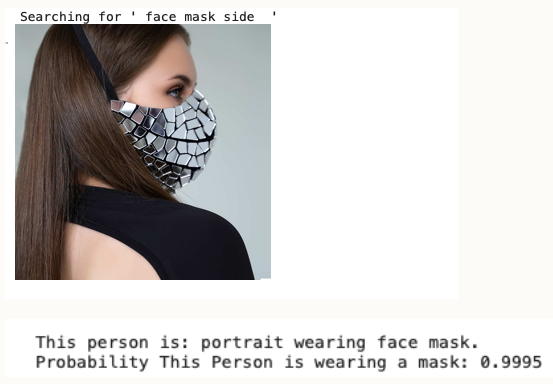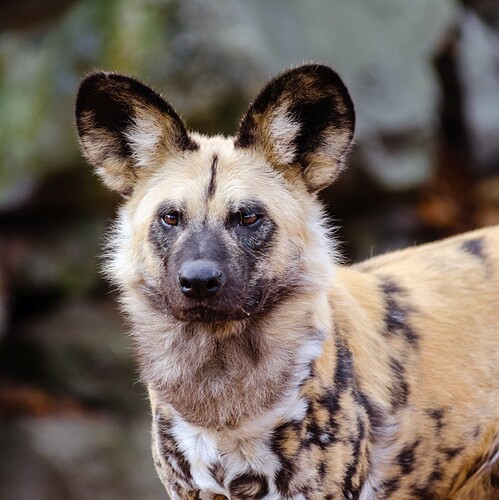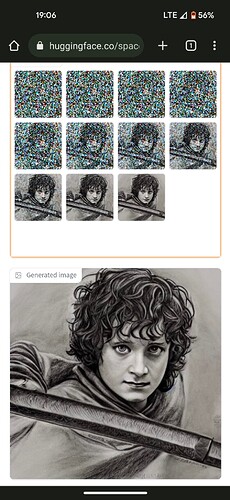Created a simple “fastest creatures” classifier based on Lesson 1. Here it is!
Created an image classifier to detect if fruit is rotten or fresh, based on what I learned from Week 1. Here is a link to a blog post I wrote about it.
Just finished watching the lecture videos for Week 2. There’s so much that I want to try out and write about, or use to build my own little projects. The course is amazing till now.
I am currently undertaking Practical Deep Learning for Coders by fastai . I finished Lesson 1 and built a face mask detector model suitable for surveillance and health safety. Model worked pretty well!
I needed to apply minor tweaks to the standard template. I increased the size of the dataset to lower variance . Also choosing a good phrase for the image search terms was a little tricky! I tried many parameters but most of the standard ones provided by Jeremy worked very well

The testing images are all challenging. I challenged the model using side images. People with dense facial hair. A low quality hooded image and even different coloured face masks. The model with reasonable accuracy was able to work through everything and predict correctly
^^ for full blog on it. Many testing examples given
Yayyyy…
I deployed my first DL model using concepts taught in Lesson 2. Here it is. It classifies the 3 fastest creatures on the planet.
Learnt so much in the last few days ![]() .
.
I love this course ![]() ! fast.ai rocks!!
! fast.ai rocks!!
Even my website runs on quarto. https://aayushmnit.com/
Code you can find the here - GitHub - aayushmnit/aayushmnit.github.io: Code for my website.
Feel free to copy the style settings if that is helpful. I found looking at open source code of other websites built on quarto useful to customize my own.
Thanks @aayushmnit ![]() Much appreciated! Will take a look next weekend (hopefully). The trouble with doing Stable Diffusion stuff (at least for me) is that that seems to consume all my time …
Much appreciated! Will take a look next weekend (hopefully). The trouble with doing Stable Diffusion stuff (at least for me) is that that seems to consume all my time …
Hey!
I have created an image classifier which tells you the breed of your dog. Wanted to host on web. Don’t know web-dev so used Anvil, got stuck hence just sharing the link of the Kaggle notebook.
can this library be used for object detection models too?
Also, I can’t find any GRADCAM implementation of the object detection model in fastai.
It would be constructive if anyone knows any relevant code for implementing the same.
Here is my Alien vs. Ghost classifier.
This could have been very good if I did it before the Halloween, but it is here at last.
It was very fun to create this, and I may try to make an actual website using the API and Javascript. Maybe.
Hi everyone! I took the first lecture of this course online on Oct 30. Today I created a project classifying patients falling from the bed or not, based on the project ‘Is it a bird?’. My project’s performance is not perfect, however, I think this was a good experience! Thanks for providing a good course and practical projects!
Are you having problems figuring out an Airbus from a Boeing?
Fear no more!
Say any of you come to either the Serengeti or the Maasai Mara and get to see an animal that looks like a Hyena / Wild Dog but don’t know what it is. Here, use this classifier to distinguish between the two animals: Striped Hyena and African Wild Dog.
First Image is a Striped Hyena. ![]()
Second Image is an African Wild Dog. ![]()
Striped Hyena vs Wild Dog Notebook: Striped Hyena Classifier
A Lord of the rings inspired app that combines language modeling (text generation and summarization) and ![]() .
.
The language modeling was done by fine tuning the distilgpt2 model (can be still improved considerably though) and the image generation is done using the stable diffusion model.
The app is hosted in huggingface spaces.
A bit mode details and a link to some kaggle code is here Fastai 2020: lesson four exercise and the Lord of the rings app | ml-blog
I am not quite sure what is the state of fastai regarding that aspect. But I guess it should be possible to compute gradients for any kind of backbone, right? As with object detection, it is mostly about loss and region proposals. (Depending on the architecture.) So, you might be able to run this on any kind of deep learning-based feature extractor, I believe. Also, see a screenshot from the repo with examples.

Alhamdulillah. I was able to finish the lecture 1 task. My first model classifies cheetah from a lion, tiger, and everything else. The code is here.
can you share the link to this library whose screenshot you have shared?
I made a little gradio app that summarizes abstracts from PubMed.
I might create a chrome extension from that using the HuggingFace inference API. Building a browser extensions is something I wanted to do for a long time …
Created this Bacteria or Cell detector by editing just a few words to the original Bird or Not ![]()
Still don’t understand a few of the functions but made me feel like I am one step closer to my dream of doing research haha
There is one thing that confused me I was training the model for 10 epoch at first and the probability was roughly 98% but after I trained it for 50 epoch is became 86% and then again i train it for like 15 epoch it was like 96% . Is it because of Overfitting ?
https://www.kaggle.com/code/rahulmaity/bacteria-or-not
Its a common phenomenon. Some discussion here:
https://medium.com/mlearning-ai/double-descent-8f92dfdc442f
So in case of Double Descent if the number of parameter is equal to sample size overfitting genrally doesn’t occur and we are able to enter this so called ‘over-parameterized graph’?



